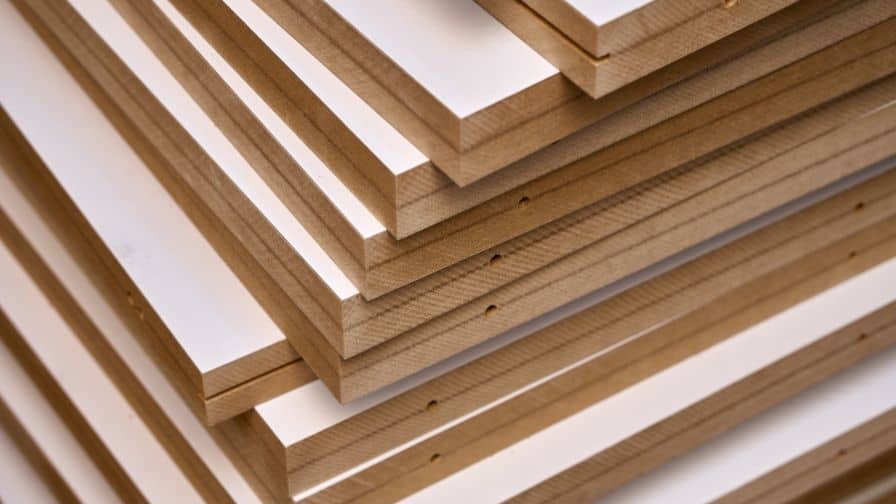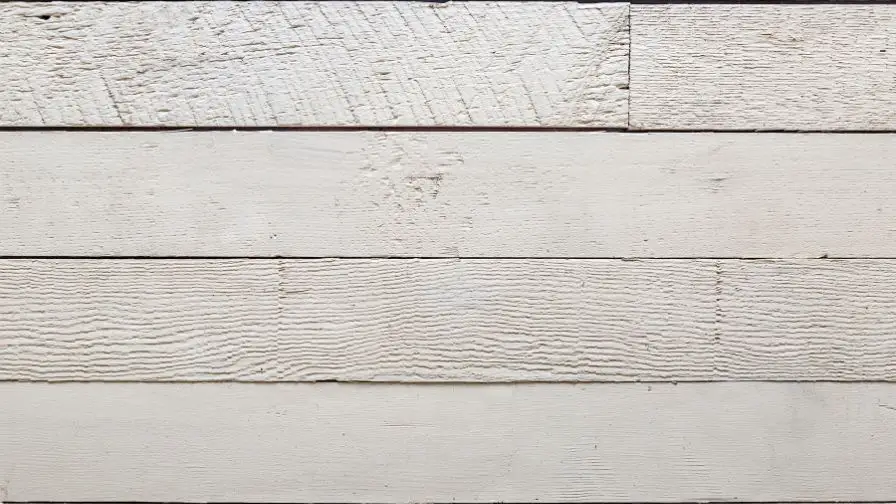
MDF, or medium-density fiberboard, is a type of engineered wood that has many uses in the construction and furniture industries. It is made by combining small wood fibers into a large mat, which is then pressed and heated. MDF is often chosen for its stability and resistance to moisture. However, there are some things you should know about using MDF before you begin your project.
In this post, we will talk about whether or not MDF needs to acclimate and how to do it if necessary!
What Is MDF And What Are Its Uses
MDF, or medium-density fiberboard, is a type of engineered wood that has many uses in the construction and furniture industries. It is made by combining small wood fibers into a large mat, which is then pressed and heated. MDF is used in a variety of applications, including cabinetry, furniture making, doors, and door frames, door and speaker boxes, shelving, and more.
One of the benefits of MDF is that newer technologies have made high-end MDF less likely to warp or crack. Additionally, MDF can be machined and drilled more easily as compared to solid wood, making it good for projects requiring detailed work or complex shapes.
Does MDF Need To Acclimate And Why
Yes, you need to acclimate MDF and for good reason. Light and Ultralight MDF molding are susceptible to warping and cupping if not properly climatized beforehand. By allowing the MDF to adjust to the temperature and humidity of its new environment, you can help prevent these issues.
How To Acclimate MDF If Necessary
Subscribe to Youva Designers
MDF should be conditioned to an indoor environment 48 hours before installation. If you are installing MDF in a damp or cold area, you may need to take extra steps to acclimate the material. You can do this by covering the MDF with a tarp or plastic sheet and weighing it down so that it doesn’t move. Then, leave the MDF in the area where it will be installed for at least 24 hours so that it can adjust to the temperature and humidity levels.
If you are installing MDF in a very dry area, you may need to mist the material with water before installation. This will help prevent the MDF from shrinking or warping once installed. To mist the MDF, spray it with a water bottle or use a damp cloth to dampen the surface lightly. Allow the MDF to dry for at least 30 minutes before proceeding with the installation.
Installing MDF can be a bit tricky, but if you take the time to acclimate the material properly, you can avoid any problems. Just be sure to follow the manufacturer’s instructions and take care when handling the material. With a little bit of care, you can install MDF successfully in any area of your home.
Tips For Using MDF In Your Projects
MDF, or medium-density fiberboard, is a versatile material that can be used in a variety of projects. It’s important to note, however, that MDF does need to acclimate before it’s used.
Here are a few tips on how to properly acclimate MDF:
- Store the MDF in the room where it will be used. This will help the material to adjust to the temperature and humidity of the room, which will prevent it from warping or expanding once it’s been cut or installed.
- If possible, allow the MDF to acclimate for at least 24 hours before cutting or working with it.
- When cutting MDF, use a sharp blade and make sure the cuts are clean and straight. Beveled or jagged edges can cause the MDF to chip or splinter.
- When installing MDF, use screws rather than nails to secure it in place. This will help prevent the material from cracking or splitting.
By following these tips, you can ensure that your MDF project turns out just how you want it to. So don’t forget to acclimate your MDF before getting started!
Does MDF Shrink And Expand?
MDF does swell with humidity or water, but it doesn’t necessarily mean that you don’t have to wait for it to acclimate before using it. If your project is going to be exposed to moisture, such as in a bathroom, kitchen, or basement, I would recommend waiting for the MDF to adjust to its new environment before starting work. Otherwise, you may find that your MDF pieces don’t fit together as snugly as you’d like.
If you are working with MDF, it is important to remember that it does absorb moisture. That means you should always use gloves when handling it and be careful not to get it wet. If MDF gets wet, it can swell and warp, making it unusable for your project.
Overall, MDF is a great material to work with. It’s easy to cut, shape, and sand and takes paint well. Just be sure to take proper precautions to prevent damage.
Do You Need To Acclimate MDF Baseboards?
Subscribe to Sawdust is Life
You’ve done your research, made your selections, and placed your order for new MDF baseboards. But before you start the installation, there is one more step you need to take: acclimating the trim.
MDF is a composite material made of wood fibers and resin binders. It’s known for its stability and resistance to warping, making it an ideal choice for baseboards and other trim.
We recommend that you should acclimatize your trim inside for at least 24 hours before installation. This will help the material adjust to the temperature and humidity of your home, and prevent any problems down the road.
What Are The Disadvantages Of MDF?
MDF is an incredibly versatile material, but it’s not without its drawbacks.
Here are a few things to keep in mind if you’re considering using MDF in your next project:
- MDF is generally denser than plywood. It is made up of finer particles and has a smooth surface. It does not have the same structural integrity as plywood and is more susceptible to warping and breaking.
- MDF is not as strong as plywood and is not recommended for use in applications where there will be a lot of weight or stress on the material.
- MDF is also more prone to absorbing moisture than plywood, which can cause the material to swell and warp.
- MDF should be sealed on all sides with a sealer and primer or laminate to protect it from moisture.
Overall, MDF is a lower-quality wood product that is not as strong or durable as plywood. It is more susceptible to damage and should be sealed and protected from moisture before use.
Where Should You Not Use MDF Trim?
You should not use MDF in areas where there is a lot of moisture, such as kitchens or bathrooms, because the material will absorb the moisture and swell. Additionally, you should not use MDF in outdoor applications because it will not stand up to the elements.
Now that you know where you should not use MDF, you might be wondering if there are any places where it is okay to use this material. In general, MDF is best suited for indoor applications where it will not be exposed to moisture or excessive stress. It can be used for projects such as interior trim, moldings, and cabinets.
Remember, when working with MDF, you need to take precautions to prevent the material from swelling or warping. Be sure to seal all sides of the trim with a sealer or primer, and avoid using it in moisture-prone areas. With proper care, MDF can be a great choice for your next project.
Does MDF Shiplap Need To Acclimate?

You betcha. Wood products need to acclimate to their indoor environment before you install them. So, if you’re planning on using MDF shiplap in your home, make sure to give it a few days or 72 hours at least to adjust to the temperature and humidity levels of your home. This will help prevent the wood from warping or cracking once it’s installed.
So, there you have it. Acclimating your MDF shiplap is important if you want it to last for years to come. So, take the time to do it right and enjoy your beautiful new Shiplap!



